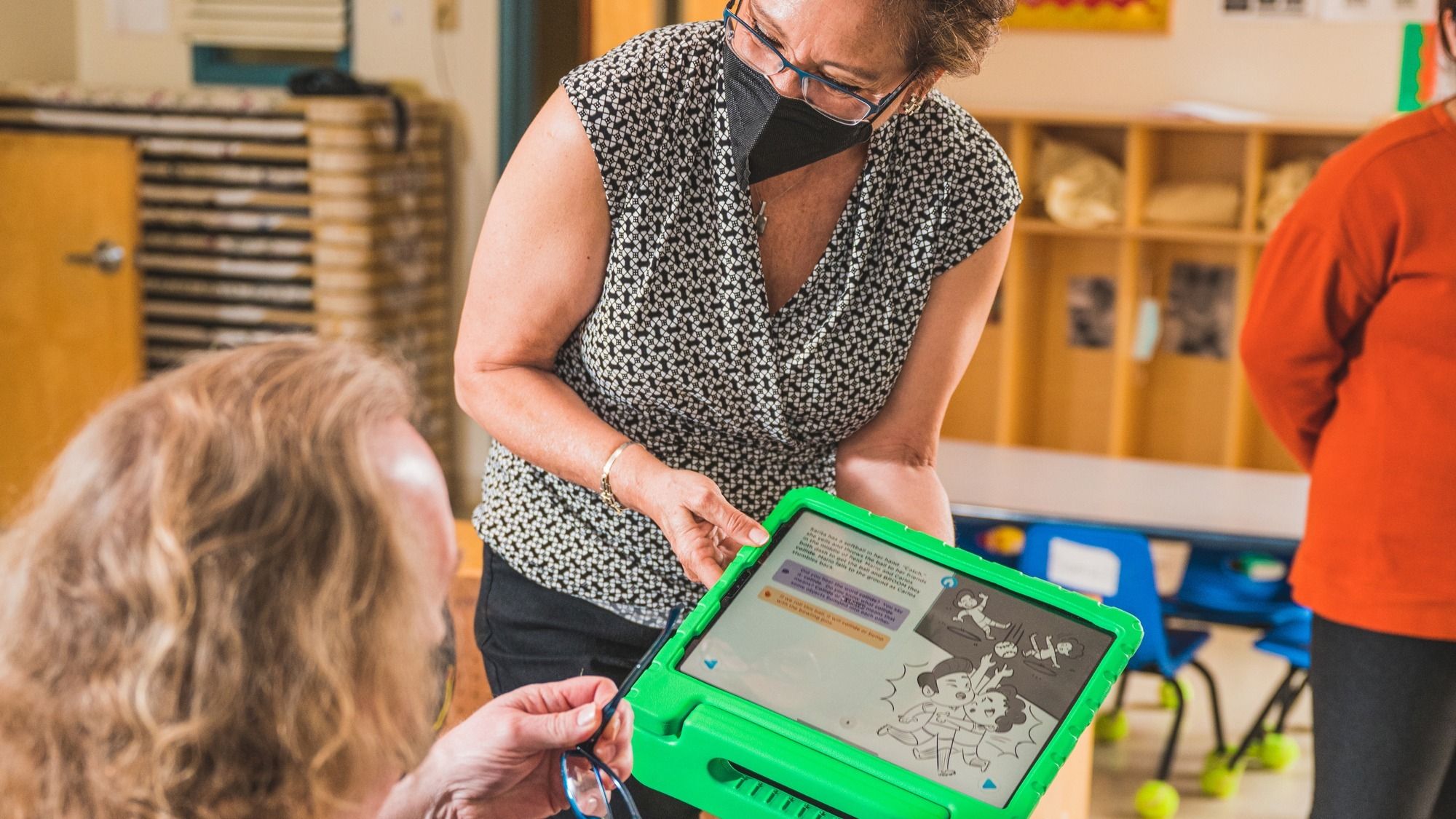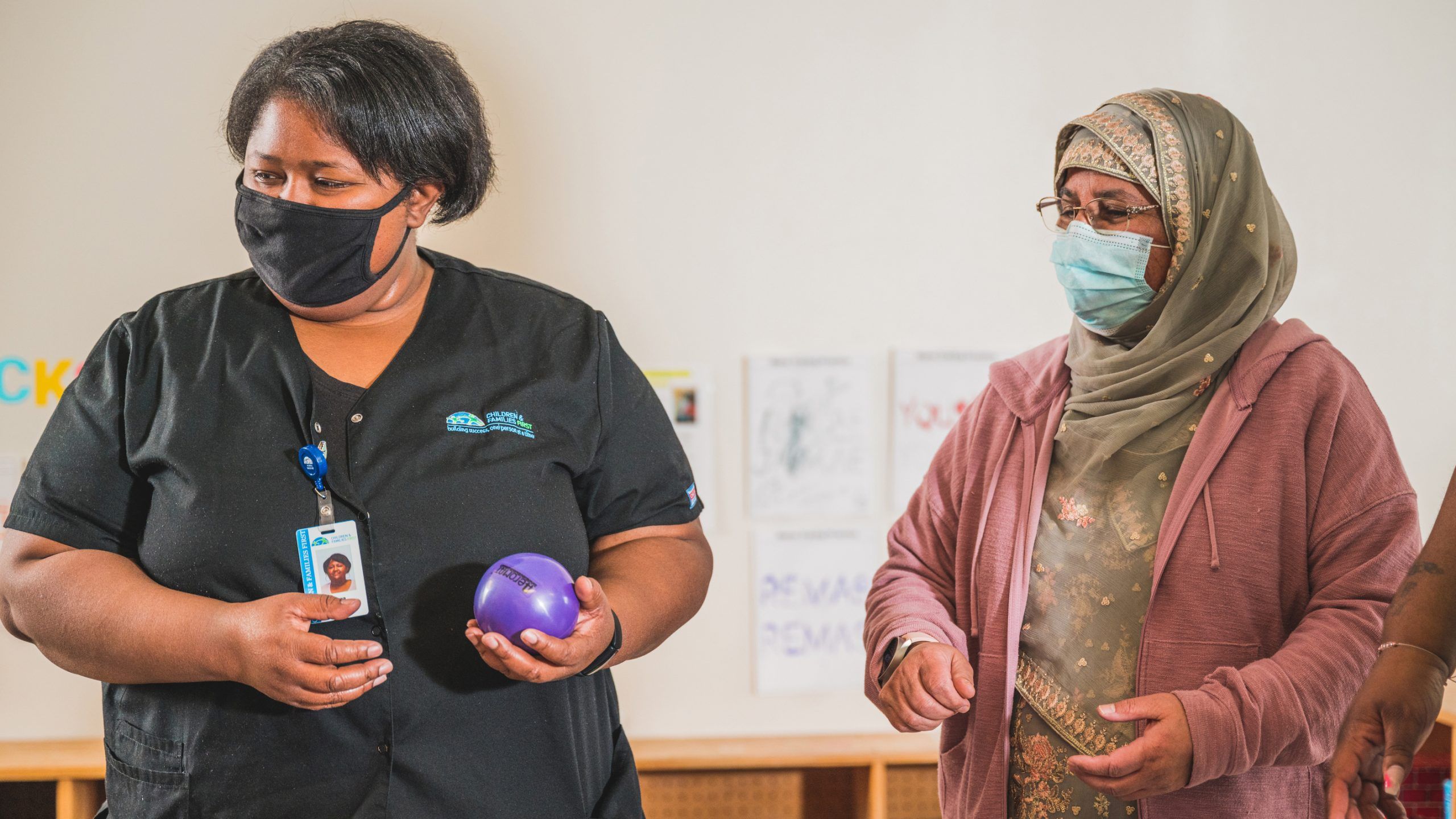SPEAKING SCIENCE
SPEAKING SCIENCE
Bilingualtek project integrates language and science learning
“Language is so important for science learning because in order to even think about science concepts, you also need the words.”
Sitting criss-cross in a circle, five preschoolers reach out to touch pieces of fabric their teacher spreads in front of them.
As the children pat the leather, denim, and cotton, she starts a conversation about which they like best. “Do you wear clothes that feel like these fabrics?” she asks.
The teacher then shows her students a turkey baster filled with water. “What do you think will happen if we get the fabrics wet?” she wonders aloud. In a matter of minutes, she introduces her students to two new words: “absorb” and “repel.”
Even though English isn’t their first language — and they’re not yet familiar with the scientific process of observing, forming a hypothesis, and experimenting and analyzing — the children relate to these concepts.
“Everybody wears clothes, so the experience is naturally engaging,” says Dr. Lucía I. Méndez, a UNCG communication sciences and disorders researcher.
Dr. Lucía Méndez’ $1.6M Bilingualtek project integrates language and science instruction to support young dual-language learners.
Her team designed the activity as part of Bilingualtek, a research program that incorporates language and science to support young dual-language learners.
This is year two of her $1.6 million National Science Foundation-funded project. To develop Bilingualtek, Méndez brought together a multi-institution team that includes science education researchers from East Carolina University and NC State University, as well as UNCG early childhood teacher training expert Dr. Karen La Paro.
Over the next two years, the team will continue to refine Bilingualtek and gather evidence for an integrated language-science approach to instructing Latino preschoolers.
Dr. Méndez, Dr. La Paro, and grad student Amy Mejia train project participants from Children and Families First.
The participant Head Start teachers and teaching assistants – Charita Archie, Sarwat Khurshid, Randy Laws, Rebecca Powell, and Bridgette Ware – are learning how to lead Bilingualtek hands-on science education activities and incorporate the project’s interactive ebooks into their lessons.
“Language is so important for science learning because in order to even think about science concepts, you also need the words. Children with limited vocabularies face challenges with science, reading, or math — especially by the time they get to the 4th grade,” Méndez says. “They may read fluently, but if they don’t sufficiently understand what they’re reading, they can experience difficulties learning.”
Dual language preschoolers who receive English-only instruction may be missing early science learning opportunities, she says.
“In our country, we have an increased number of Latino dual language learners entering preschools, a shortage of bilingual childhood educators, and limited science training for teachers at this level.” As a result, low-income Latino preschoolers are at a higher risk of being left behind in STEM.
Bilingualtek gives monolingual teachers the tools they need to help bilingual children engage with and talk about their natural world – thus increasing their scientific vocabulary going into elementary school.
As part of a unit exploring recycling, for example, the team created an ebook about a Latino family celebrating their abuela’s birthday. Children in the story catch fish for a special birthday dish of ceviche and reuse found objects to make a gift. As students and teachers read together, they take advantage of specially designed sections with Spanish narration and animations to illustrate science concepts.


The culturally-responsive elements also give children a sense of pride. “It helps teachers appreciate their students’ home language and culture,” Méndez explains.
That matters, as these students bring important knowledge and skills to the table. “Their cultural and linguistic experiences enrich their learning and the classroom environment,” Méndez says. “Different languages have different ways of expressing the same concepts, and having access to that opens our minds and gives us a better understanding of the world.”






